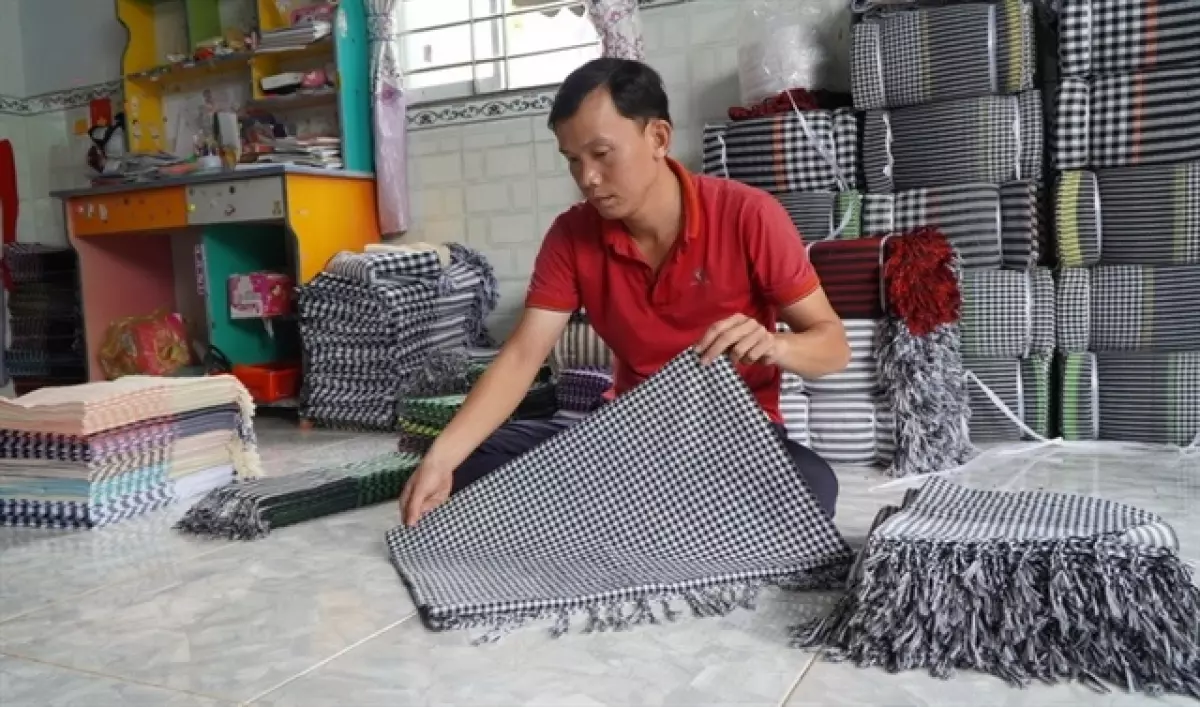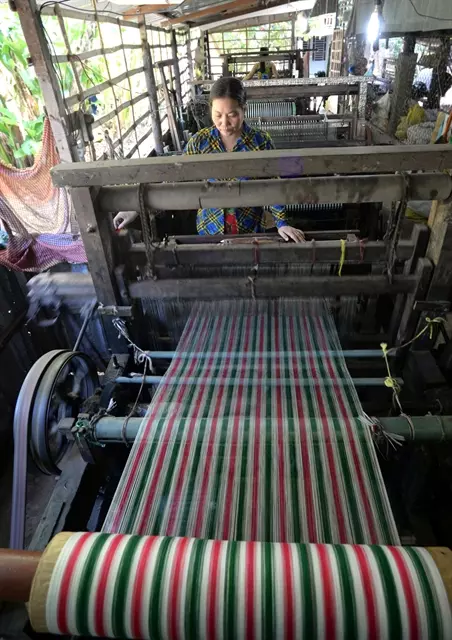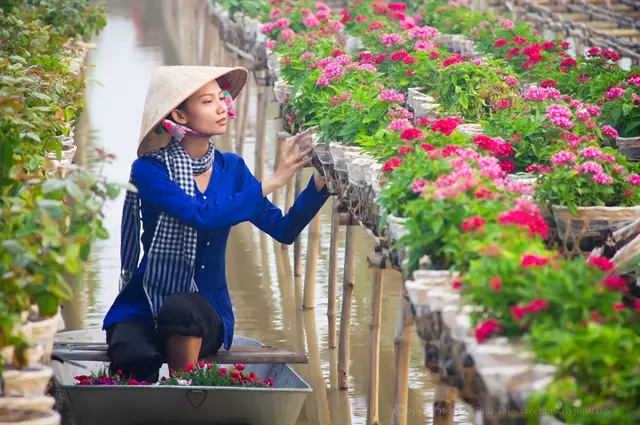by Nhựt An
Introduction
Southwestern Vietnam is a region known for its iconic check scarves. These scarves, worn by both men and women, have been an integral part of the local culture for centuries. They serve as a symbol of the Mekong Delta region and its people. The Check Scarf Weaving Village in Long Khánh A Commune, Đồng Tháp Province, is where this traditional craft has been practiced for generations. The artisans here take great pride in their work, and their dedication has earned the craft the recognition of being a National Intangible Cultural Heritage by the Ministry of Culture, Sports, and Tourism.
A Cultural Legacy
The rich history of the check scarf weaving craft dates back to the early 20th century when it flourished on an islet called Long Khanh A. Over time, this traditional craft faced competition from imported industrial fabric. However, some silk weavers remained loyal to their craft, even reviving its heyday. Today, their products have gained popularity and are widely known for their distinct cultural identity.
 Check scarves being prepared for delivery. VNA/VNS Photo: Nhựt An
Check scarves being prepared for delivery. VNA/VNS Photo: Nhựt An
From Hand to Power Looms
In 1998, a significant milestone was reached when the village gained access to the national power grid. This advancement allowed the weavers to switch from hand looms to power looms. Approximately 80% of the check cloth production is now done by machines, resulting in improved productivity, increased product value, and enhanced competitiveness. Nonetheless, traditional looms are still preserved in the village for tourism and experiential activities.
 A weaver working on a loom. Photo: thamhiemmekong.com
A weaver working on a loom. Photo: thamhiemmekong.com
Supporting the Local Community
The weaving craft in Long Khánh A Commune provides regular jobs for over 300 local workers. There are currently 60 households engaged in this craft, with 142 weaving looms. Depending on productivity, each weaver can earn an average of VNĐ200,000 to 250,000 per day ($8.50-10.70). The village produces more than 5 million check scarves annually, which are distributed widely in HCM City, the Mekong Delta provinces, and even in Cambodia. The selling price ranges from VNĐ50,000-160,000, varying based on the type, color, and size of the scarf.
 A woman wearing a check scarf, an essential part of daily life in the Mekong Delta. Photo: thamhiemmekong.com
A woman wearing a check scarf, an essential part of daily life in the Mekong Delta. Photo: thamhiemmekong.com
A National Intangible Cultural Heritage
The check fabric, deeply woven into the daily lives of the villagers, received recognition as an iconic cottage industrial product of Đồng Tháp Province in 2014. Recently, it has been recognized as a National Intangible Cultural Heritage. For artisans like Dương Văn Lực, who has dedicated over 40 years to the craft, this recognition brings both excitement and pride. Lực hopes that the weaving village will continue to prosper so that he can pass on the craft to future generations.
Innovation and Preservation
To meet the challenges faced by a 100-year-old weaving village, artisans have embraced innovation. They have combined traditional and modern elements to create distinctive check scarf designs. The scarves are now available in a variety of colors and patterns, even featuring symbolic images of Đồng Tháp Province, such as lotus flowers and red-headed cranes. Additionally, check cloth is being used to create an array of products such as shirts, dresses, handbags, hats, and neckties. These various products have become popular tourism gifts from the locality.
The local authorities have played a crucial role in supporting the weaving craft. They have provided access to preferential loan sources, which have allowed many households to invest in modern equipment and technology, thus increasing productivity and diversifying the range of products. The village's heritage is promoted through participation in fairs and exhibitions. Efforts are being made to expand markets, build local brands, and establish new contracts. The development of the weaving village is also intertwined with tourist activities, including visits to workshops, ancient houses, and orchards.
Nhựt An's article highlights the timelessness and cultural significance of the check scarf weaving craft in southwest Vietnam. This craft, passed down through generations, serves as a source of pride for the artisans and sustains their livelihoods. The recognition of the craft as a National Intangible Cultural Heritage acknowledges its value and ensures its continuance for future generations to appreciate.

















